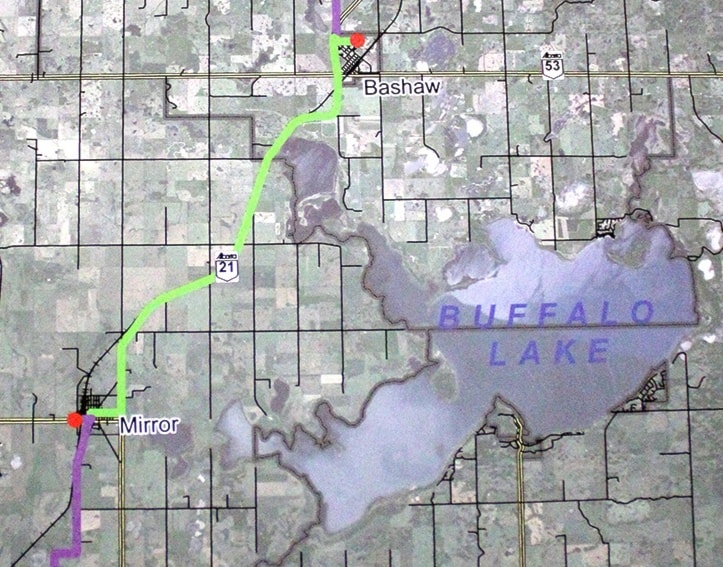This is a re-published story from March 1, 2017
It will be several more months before Bashaw is hooked up to the regional water system and residents have expressed concerns about how the change will affect the water they get.
According to Darren Dempsey, the utilities supervisor for Lacombe County, there won’t be too much of a difference in the quality residents receive. Lacombe County has been contracted to operate the system for the Highway 12/21 Regional Water Services Commission.
“People might notice a taste difference with the Red Deer River water having more calcium and magnesium,” stated Dempsey, as the water will be harder than Bashaw’s current well-sourced water.
“That will also mean less suds and lather when washing, but also scale in coffeemakers.”
He added that except for a few items, the makeup of the water from both sources are similar, though he admitted even the differences are of no real consequence.
Because the town’s present source is ground water, there are more organics present that react with the chlorine that is added. That can cause disinfection by-products such as odours and THMs (trihalomethanes). THMs can be carcinogenic, if levels reach more than 1 milligram per litre (mg/l), something Dempsey said is not a concern with Bashaw’s water.
The water from the Red Deer River has less than half the level of organics and is also treated by chloramination — a longer lasting disinfectant process where chlorine and small amounts of ammonia combine, which reduces the amount of contaminants compared to chlorine alone.
People will likely not notice two other factors that will change the water — fluoride and turbidity.
The water from the regional system is fluoridated to 0.78 mg/l, something that will make dentists happier. Bashaw’s well water has natural fluoride at a significantly lower 0.27 mg/l.
Turbidity, how clear the water is, is also improved by switching to the regional system supply. At 0.23 NTU (a measurement of suspended solids in water), the Red Deer River water is nearly 60 per cent clearer than the well water. The higher the turbidity, the less effective disinfection is due to more items like silt, clay, algae, organic matter and trace metals being in the water.
Switch for safety
While better water quality is one reason to switch, the real issue behind it and the main reason the commission was created back in 2005 is safety.
Dempsey explained there are hundreds of ground water wells spanning the aquifer that Bashaw is drawing its water from and the risk of potential contamination is fairly high.
“One water source through a state of the art water treatment facility is preferred,” he said. “Like the issue in Alix, they thought their wells were sustainable and then one day they weren’t. Surface water you can see, ground water (wells) you can’t. You have to do monthly depth measurements and lengthy draw-down recovery tests periodically, but you still never know about others joined to the aquifer.”
Win Tan, drinking water operations specialist with Alberta Environment and Parks, added ground water availability depends on weather and has limited productivity, whereas consistent treated water can minimize quality complaints and keep costs lower.
“Standalone water treatment plant upgrades are expensive and because of regular, more stringent changes in regulatory requirements the upgrading process is expensive for a singular municipality,” Tan said, adding it isn’t just the price of the physical infrastructure that’s prohibitive, but so is hiring and retaining certified operators.
“That’s why Alberta Environment has come up with a regionalization plan for both water treatment and operation for the long term sustainability of providing Albertans with a high quality drinking water supply, while relieving the barriers of regional economic growth that can be restricted by its availability.”
